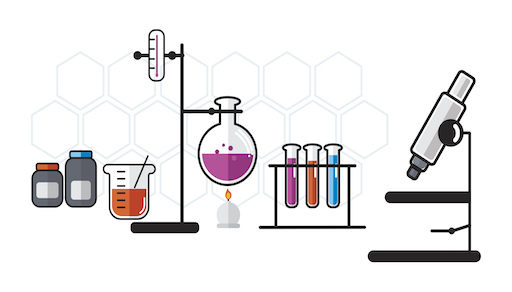Chemistry is a fascinating science that involves the understanding and manipulation of matter. The building blocks of all matter, from the simplest molecule to complex organisms, are elements, mixtures and compounds. To understand these components better, it is essential to know what they are and how they interact with each other. Additionally, specific laboratory equipment can be used to help analyse them and their properties on a deeper level.
In this article, we will explore the differences between elements, mixtures and compounds and explain some lab equipment that can be used to study and separate them.
What is an Element?
An element is a pure substance comprising only one type of atom. Each element has its unique atomic number and mass, identified by its atomic symbol on the periodic table of elements, e.g., carbon, oxygen, hydrogen, gold, silver and iron. Elements can exist in different states such as solid, liquid or gas.
What is a Compound?
A compound is a substance made up of two or more elements chemically combined in a fixed ratio. Like elements, compounds can exist in either solid, liquid or gas form. But, unlike elements made of one type of atom, compounds are composed of different atoms bonded together with strong chemical bonds. Examples of compounds include water (H2O), and table salt (NaCl), made from sodium and chloride.
What is a Mixture in Chemistry?
A mixture combines two or more substances that are not chemically combined. Unlike compounds, the components of a mixture remain relatively unchanged after they have been mixed together. Mixtures can be either homogenous (uniformly distributed throughout) or heterogeneous (distributed unevenly). Examples of mixtures include air, which is composed of different gases such as oxygen, nitrogen and carbon dioxide; soil, which consists of particles from rocks and organic matter; and alloys, which are a combination of two or more metals. Mixtures can be separated into components by physical methods such as distillation, filtration, crystallisation or chromatography.
What Laboratory Equipment is used to study Elements, Compounds and Mixtures?
There are a variety of tools and equipment which can be used to study elements. For example, spectrometers and mass spectrometers are used to analyse the composition of elements and compounds. Other tools, such as an electron microscope, can observe the structure of atoms and molecules. Additionally, Nuclear Magnetic Resonance (NMR) spectrometers can detect different types of particles present in a compound.
What Laboratory Equipment is used to Separate Compounds and Mixtures?
There are a variety of methods used to separate compounds and mixtures, including:
- Simple distillation is a process that can separate two or more liquids from a mixture. This technique relies on the fact that different liquids have different boiling points. As the mixture is heated, the liquid with the lower boiling point will evaporate first and can be collected in a separate container.
- Fractional distillation is a process used to separate complex mixtures of liquids with different boiling points. It works by heating the mixture to its boiling point, then condensing and collecting the vapours produced in various containers according to their boiling points. This technique is used in industrial processes for separating hydrocarbon mixtures such as crude oil.
- Filtration is a process used to separate compounds and mixtures by passing them through a filter. The filter will separate the components according to size, shape, and density. For example, a fine mesh can filter larger particles, such as sand from water.
- Crystallisation is a physical process used to separate components of a mixture based on their different solubilities. It involves cooling a liquid solution until the molecules of one of the substances in the mixture form into crystals, which then precipitate out. This process is used for separating solid compounds from solutions.
- Chromatography – Involves passing a solution through a column packed with adsorbent materials such as silica gel or alumina, which can then be used to separate components of the mixture based on their physical properties.
- Nuclear Magnetic Resonance (NMR) spectroscopy is a powerful technique for separating mixtures and compounds. It uses the magnetic properties of specific nuclei to measure the energy the sample absorbs when placed in a strong magnetic field so that you can distinguish between different molecules in a mixture.
- Centrifugation is an effective way to isolate and purify components from mixtures; it works by spinning the mixture in tubes at very high speeds so that any heavier components will settle at the bottom while lighter ones remain suspended in a liquid.
By understanding how elements, compounds and mixtures are composed and how they interact, scientists can gain insight into the composition of matter at the atomic and molecular levels. This can help scientists develop new technologies, create medicines and more. To study these materials in the lab, you need specialised tools such as spectrometers, mass spectrometers, electron microscopes and nuclear magnetic resonance (NMR) spectroscopy devices to help analyse them. At Techmate, we have all the equipment needed, from Bunsen burners and flasks to centrifuges for separating mixtures into their components, so you can easily explore your scientific curiosity! If you need help finding exactly what you need, please get in touch with the Techmate team today.

